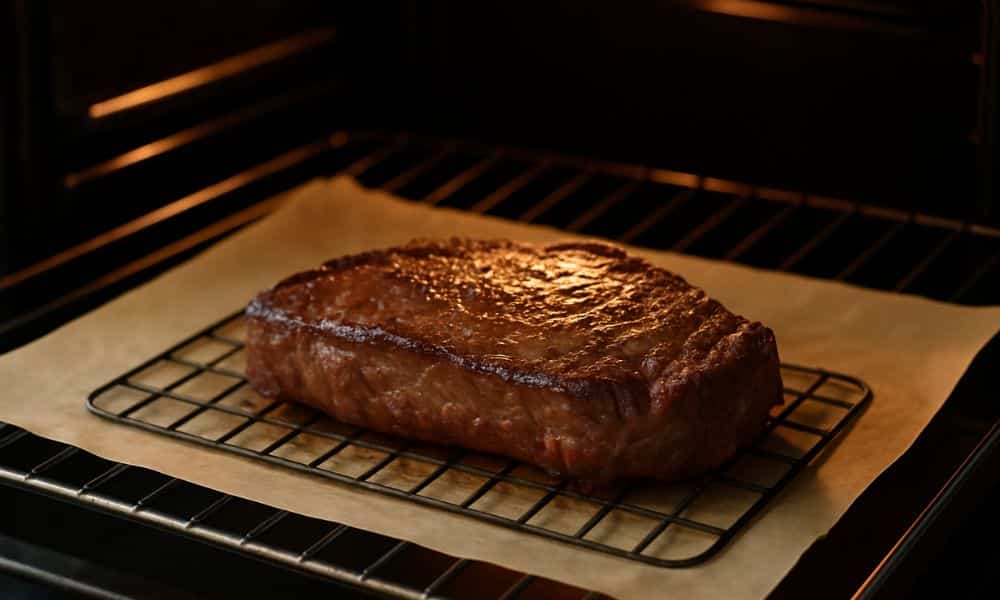I still remember trying how to slow cook steak in oven for the first time. It was a quiet evening, and I wanted something tender without stress. The gentle heat turned a simple cut into juicy, flavorful meat that felt like a treat.
That moment showed me how patience can change cooking. Slow roasting made the steak soft, rich, and full of taste. Over time, I tested and refined the process until it became second nature. In this guide, I’ll share my best tips and steps so you can create the same steakhouse-quality results right in your own kitchen.
Why Choose the Oven for Slow Cooking Steak
The oven is one of the best tools for slow cooking steak. Unlike the grill or stovetop, it keeps heat steady and gentle. That steady flow of warmth helps the steak cook from edge to center without drying out.
On the grill, heat can flare up and cook unevenly. A pan on the stove often leaves hot spots. The oven, though, wraps the steak in an even blanket of heat. This makes the process more controlled and less stressful.
For beginners, this method is forgiving. Small mistakes don’t ruin the meal. You get more time to adjust, and the results stay juicy and tender. It feels like the oven does most of the hard work for you.
Choosing the Right Cut of Steak
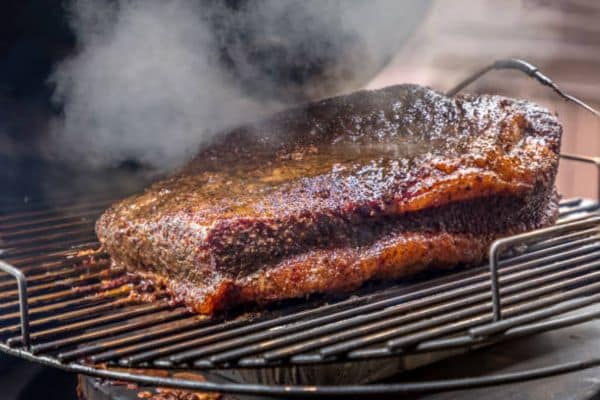
The right cut makes all the difference for slow cooking. Ribeye, tenderloin, strip steak, and porterhouse are the best choices. These cuts have great flavor and stay tender during slow roasting.
Marbling plays a big role in taste and texture. The thin streaks of fat melt slowly as the steak cooks. This keeps the meat moist and adds rich, buttery flavor. Steaks with more marbling often taste juicier and softer.
Thickness matters too. Choose steaks that are 1.5 to 2 inches thick. Thinner cuts cook too fast and lose tenderness. A thicker steak allows slow heat to work perfectly, giving you better results.
How to Slow Cook Steak in Oven (Step-by-Step)
Learning how to slow cook steak in oven is easy and beginner-friendly. The gentle heat makes the steak soft, juicy, and packed with flavor. Follow these simple steps for perfect results:
Bring the steak to room temperature
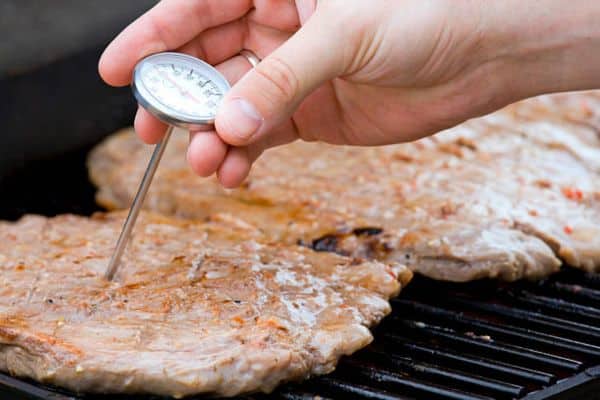
Take the steak out of the fridge about 30–40 minutes before cooking. This helps it cook evenly and stay tender.
Pat dry and season well
Use paper towels to remove moisture from the surface. Season generously with salt, pepper, and optional spices for extra taste.
Preheat the oven to 250°F (120°C)
Low heat is the secret to a juicy steak. Cooking slowly helps keep the meat moist and evenly done.
Place the steak on a wire rack
Set the rack over a baking sheet. This lets air move around the steak for consistent cooking on all sides.
Slow roast until 10–15°F below target doneness
Use a digital thermometer for accuracy. For medium rare, remove the steak around 120°F; for medium, aim for about 130°F.
Rest for 10 minutes before searing
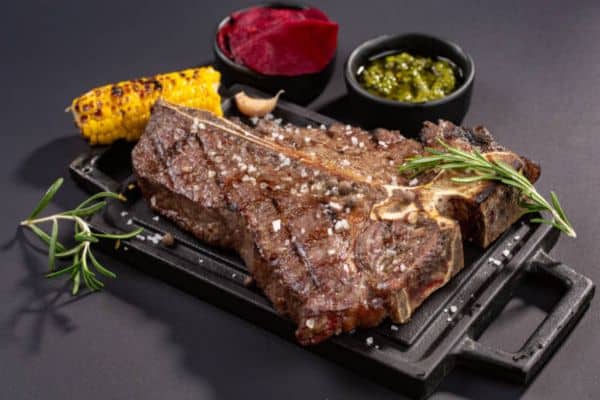
Resting keeps the juices inside the steak. Skipping this step can make the meat dry.
Quick sear for a golden crust
Heat a skillet until very hot. Sear each side for 45–60 seconds. Add butter, garlic, or herbs for rich flavor.
Slice against the grain and serve
Cutting across the fibers makes the steak more tender. Serve warm and enjoy a restaurant-quality result at home.
Pro Tips for Perfect Steak Every Time
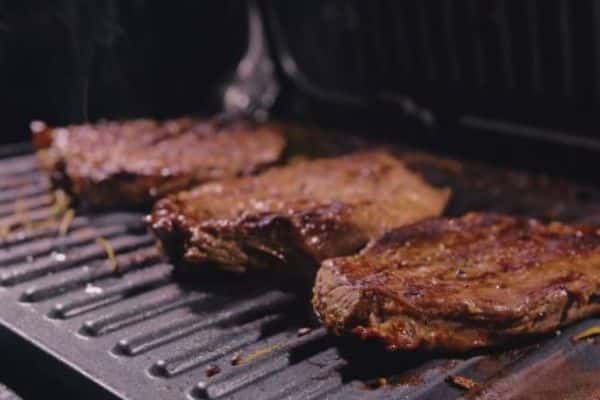
A digital meat thermometer is the most reliable tool you can use. It removes all guesswork and gives exact results. With it, you know the steak is done right every time.
Salt early for more flavor. Allowing the salt to sit helps it move into the meat. This step also makes the crust richer and the texture softer.
Resting is not optional. Let the steak rest before the final sear and again before slicing. This pause keeps the juices inside and makes every bite tender.
Pick the right oil for searing. Avocado, canola, and sunflower oils handle high heat without burning. They create a golden, crisp crust that locks in flavor.
Common Mistakes Beginners Should Avoid
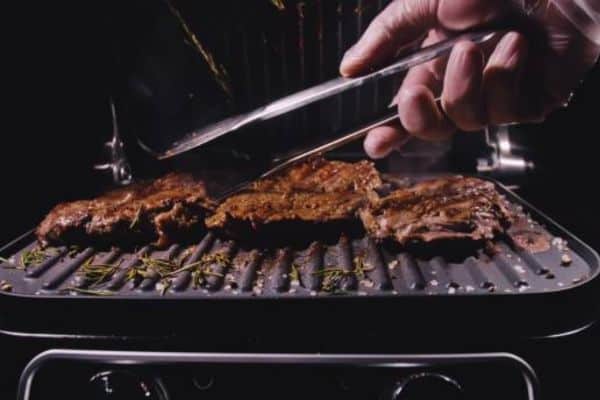
One common mistake is cooking steak straight from the fridge. Cold meat cooks unevenly and often ends up tough. Let it sit at room temperature before you start.
Another mistake is adding too much seasoning. Heavy spices can hide the natural flavor of the meat. Keep it simple with salt, pepper, and maybe one or two extras.
Using the wrong oil can also spoil the sear. Butter burns fast, while oils with a high smoke point handle heat better. Choose avocado, canola, or sunflower oil for the best crust.
Skipping the resting step is a big error. Cutting too soon lets the juices spill out onto the plate. Resting keeps the steak moist and full of flavor.
Best Slow Cookers for One Person
While this guide focuses on how to slow cook steak in oven, small slow cookers work well for single servings. They are simple to use, save space, and make cooking stress-free. Perfect for compact kitchens or quick meals. The best slow cookers for one person
Hamilton Beach 3-Quart Slow Cooker
Easy to clean and ideal for one person. Its size makes it great for small cuts and simple recipes.
Crock-Pot 2-Quart Slow Cooker
A budget-friendly pick that’s perfect for beginners. It delivers tender, flavorful meals with minimal effort.
Instant Pot Duo Mini
A versatile option for small-batch cooking. Works as a slow cooker, pressure cooker, and steamer in one compact design.
Compact slow cookers are perfect for busy lifestyles. They save time while helping you enjoy homemade meals without extra work.
Final Thoughts
Slow cooking steak in the oven is simple, rewarding, and reliable. The gentle heat gives the meat time to soften and stay juicy. With the right cut, seasoning, and patience, you can create steakhouse flavor at home.
This method works for both beginners and seasoned cooks. It gives you control, reduces stress, and delivers great results every time. Add a quick sear at the end, and you have a steak that feels rich, tender, and full of flavor.
Cooking should be enjoyable, not rushed. Take your time, enjoy the process, and make it your own. With practice, every steak you make will taste better than the last.


